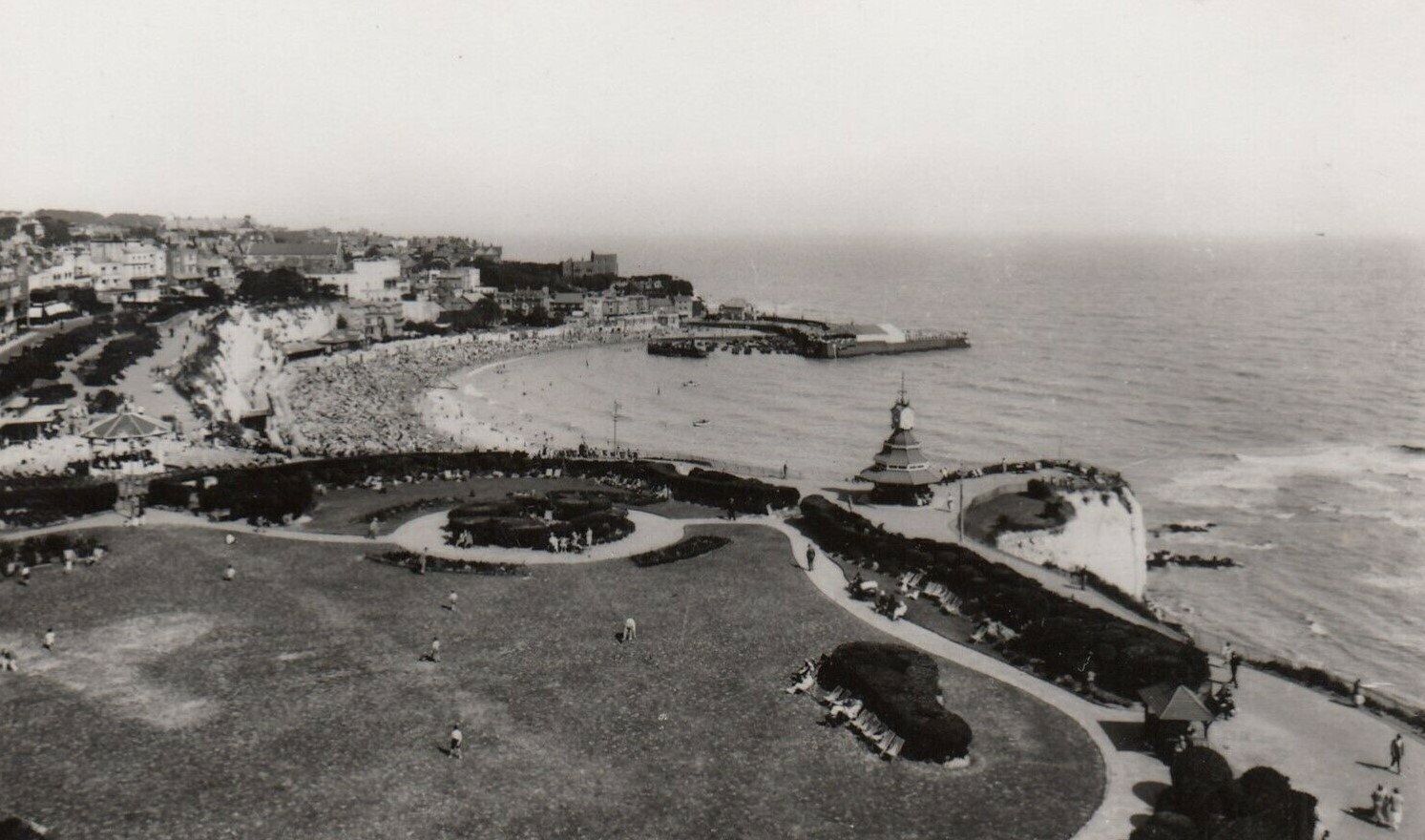1 March 1917
Bombed: Kent
The first air raid of 1917 saw a single seaplane fly from Zeebrugge to attack Broadstairs on the Kent coast.
The aircraft appeared shortly after 9.30am on this Thursday morning and was first noticed as it dropped three HE bombs at sea, about 50 yards east of the pier. Coming inland, the pilot then dropped an HE that exploded in Victoria Gardens near a large hotel, narrowly missing Dr Brightman, the Chairman of the Council. In King Edward's (now Edward) Avenue a bomb landed in the street slightly damaging two houses, followed by another that landed in Cinder Path, which ran alongside the railway. It caused damage to nine houses in neighbouring Clarendon Road. The next bomb fell in the playground of the County Council school in Grosvenor Road, close to a classroom full with 40 children. Their teacher, Miss Webb, reacted quickly, getting the children shelter beneath their desks. Although window glass blasted into the classroom, only Miss Webb and five of the children received minor cuts thanks to the teacher’s quick actions. A second bomb also fell in Grosvenor Road, damaging two houses. The sixth and final bomb struck Gladstone Road, about half a mile inland. The bomb struck the roof of a villa known as Fern Cottage, demolishing the upper part of the house and causing damage to four houses nearby, but all the occupants emerged unharmed. Having dropped his final bomb, the pilot turned back to the coast and flew back to Zeebrugge.
The response from the RNAS and RFC was sluggish. The RNAS ordered up nine aircraft but the first of these only took off at 10.02am, when the raider was already heading home, while five of them took off after 10.30. The RFC sent up 14 aircraft, with 10 of these coming from Essex, but the order was only received at 10.12am and although seven aircraft were in the air within 13 minutes it was all too late.
Victoria Gardens, Broadstairs
Casualties: 0 killed, 6 injured
Damage: £700
16 March 1917
Bombed: Kent
An unidentified seaplane of SFA 1 set out to attack shipping in The Downs off the east Kent coast but a thick layer of cloud hindered the crew’s navigation. At around 5.30am the aircraft broke through clouds at a height of about 1,300 feet, whereupon the crew discovered they were over land and approaching Westgate on the north Kent coast.
Carrying 21 small HE bombs, each weighing 5kgs, the crew dropped the first two on fields at Dent-du-Lion Farm, between Garlinge and Westgate, followed by a third that fell at Mutrix Farm. The RNAS had established a station at Westgate on land owned by Mutrix Farm and the next bomb landed about 150 yards to the east of the airfield. Having been heading north, the raider now swung round to the west and the next bomb landed west of Mutrix Farm, on land between the road and railway line, with another striking the railway embankment. Those first six bombs broke a few windows in nearby cottages and smashed glass in a greenhouse. The seaplane then turned south and rapidly dropped 10 bombs which all fell within 100 yards of each other in a field about 700 yards south-east of Westgate Station. Swinging around to the north-west now, the seaplane’s next bomb landed on a lawn at Streete Court, a boys boarding school, followed by one on a greenhouse at a large house about 250 yards north of St. Saviour’s Church. The last bomb on land struck the ground about 20 yards from a bandstand and shelter on the sea front, shattering more glass, with the final two bombs falling in the sea within 300 yards of the shoreline.
The official British account incorrectly states that the raider was a captured Handley Page 0/100 flown by a German crew, following reports from local observers. The local police, however, did point out that these reports were not corroborated.
In response the RNAS sent up three aircraft between 5.35 and 5.45am but the low cloud prevented them seeing anything. The RFC also sent up three aircraft just before 6.00am, one from Rochford (37 Squadron), one from Dover (50 Squadron) and one from Bekesbourne (50 Squadron), but all experienced the same problems with the low cloud.
Casualties: 0 killed, 0 injured
Damage: £45
